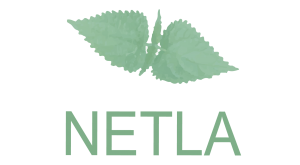Relations between the result of HLJÓM-2 (phonological awareness test) and Icelandic national tests. Who are improving and who falls behind
Keywords:
Phonological awareness, national tests, academic achievementAbstract
The purpose of this study was to investigate the relationship between phonological awareness at 5 years of age and later academic achievement throughout compulsory school in Iceland. During 1997–1998, 267 Icelandic preschool children, all aged from 5;4 to 5;10 were tested with the HLJÓM-2, an Icelandic phonological awareness screening test designed specifically for preschool teachers to identify children at risk of developing reading difficulties. Research has shown that children with strong phonological awareness at the beginning of first grade usually learn to read more easily than children who fall behind their peers in phonological awareness. Although it has been demonstrated that phonological awareness can be improved with intervention, the early identification of children at risk needs to be based on a valid tool sensitive enough to correctly identify children at risk. In 2011, children from the sample previously tested with the HLJÓM-2, now aged 18–19 years, were again contacted. Out of the original 267 participants, 221 (83%) consented to have their results from the preschool language assessment compared with their performance on national tests in Grades 4, 7, and 10. They also answered an online questionnaire addressing various aspects of their lives, including experiences in compulsory school; whether they had received or needed special support there due to learning difficulties, and whether they had been diagnosed with conditions that interfered with learning, including learning disabilities and attention deficit hyperactivity disorder (ADHD). An analysis was conducted to investigate what proportion of students had improved their position, or fallen further behind compared to peers, after completing the HLJÓM-2 and until taking the national tests in Icelandic in Grades 4, 7 and 10. The analysis also focused on whether special educational support in compulsory school, or diagnosis with a learning disability or ADHD, had increased the students’ likelihood of scoring higher on national tests in Icelandic than they had on the HLJÓM-2 in preschool. Participants were divided into three groups based on their results on HLJÓM-2 and into corresponding groups based on scores on national tests. Group 1 were the 25% with the lowest scores, Group 2 the next 25% and Group 3 the 50% who had moderate scores or above. More than half the respondents (57%) continued to perform at the same level (same group) on national tests in Grade 4 as they had on the HLJÓM-2, whereas 20% had improved their standing, and 23% had fallen further behind their peers. Out of the group with the lowest scores on the HLJÓM-2, 43% received special education in compulsory school, 28% were diagnosed with ADHD, and 37% were diagnosed with a learning disability. Participants diagnosed with either a learning disability or ADHD scored lower than participants without those problems, both on the HLJÓM-2 and the national tests. Students who reported to have received special support due to having learning difficulties also scored lower on all tests than students who did not receive special support. Results thus indicate that special education does not necessarily result in improved performance on national tests in Iceland compared to performance on the HLJÓM-2, although it seems to prevent students from falling further behind their peers. Participants who said they should have received special support in compulsory school, but did not, were more likely to fall further behind their peers in compulsory school rather than to improve their performance on the HLJÓM-2 or stay at the same level. Results of regression analysis show that being diagnosed with a learning disability, ADHD, or other disabilities (e.g., hearing impairment, language impairment, autism spectrum disorder, or Tourette’s) explained 21% of the variability in scores on national tests in Icelandic from Grade 4, 29% from Grade 7, and 22% from Grade 10. Scores on the HLJÓM-2 were then added to the regression model, which resulted in a significant increase in R2 ; the model then explained 44% of the variability in scores from Grade 4, 49% from Grade 7, and 40% from Grade 10.
